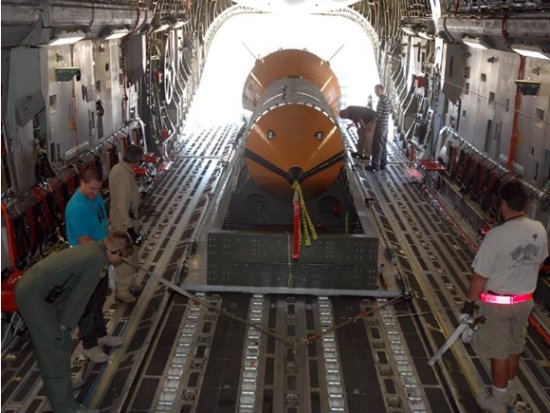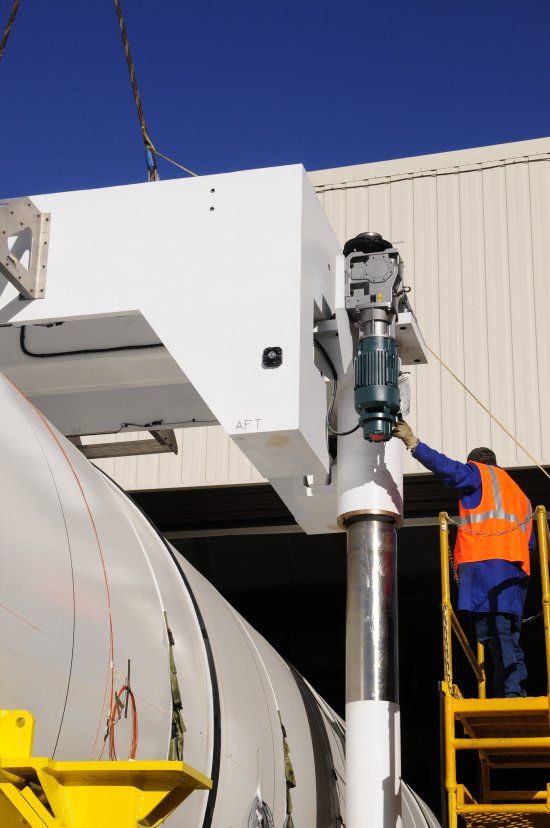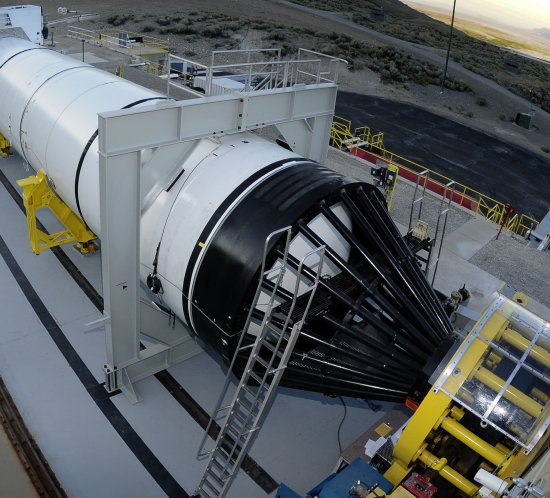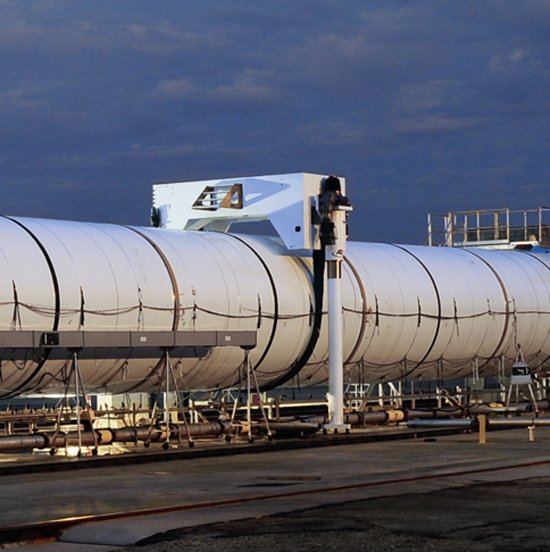NASA and contractor engineers have developed multiple options for “de-tuning” the Ares I rocket to prevent any problematic thrust oscillations from originating in its solid-rocket main stage to sync up with the natural resonance of the rest of the vehicle.
The Constellation Program Control Board set a formal baseline for thrust oscillation mitigation during a meeting Dec. 17. Moving forward, the Ares I vehicle design will be updated to include the addition of upper plane C-Spring isolator module and the upper stage fuel tank LOX damper.
While evaluations of data from the DM-1 motor test and Ares I-X test flight to date show no problematic thrust oscillation vibrations occurred, the Constellation team concluded incorporating the upper plane C-Spring isolators and LOX damper at this phase of design is a sensible addition.
“When we discover an engineering risk, like thrust oscillation, we tackle it with full rigor,” said Jeff Hanley, Constellation Program manager. “That’s what this team has done with thrust oscillation. We assumed the worst when the problem was first discovered. The good news is there is no empirical evidence of problematic oscillations from our ground test of the first stage development motor or during the Ares I-X first test flight.”
“The isolators work like shock absorbers to de-tune the vehicle and the LOX damper will counter the vehicle acoustic response by absorbing and disrupting the oscillation. Together these options will give us added confidence in the tuning of the vehicle as we mature the Ares and Orion designs,” added Hanley.
The NASA team, along with the prime contractors, has worked this issue carefully, understanding and minimizing any effects of the integrated vehicle response by introducing new thrust oscillation hardware into the design. The team will “scar,” or prepare, the upper stage design to accommodate the addition of this mitigation hardware at a later time, if desirable.
“The options approved today puts us on a robust foundation as we move forward,” said Hanley. “Finalizing the thrust oscillation design now allows us to keep to our schedule and provides contractors specific requirements about what we need them to build.”







